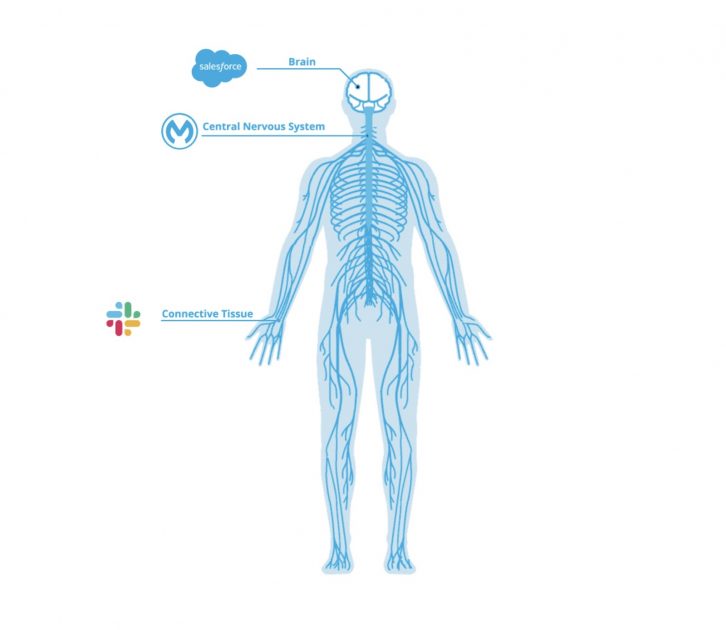Turn screens into storefronts with immersive shopping — use augmented reality for eCommerce.

A lot of people prefer to make big purchases like furniture in person. It seems easier to visualize it in their home if they can see it. But what if you could take that recliner from the showroom right to your customer’s living room?
Brands are using AR to make that leap. Salesforce Commerce Cloud and Threekit have partnered to create an app that allows you to scan a room and place it virtually in the space. This kind of customizable shopping experience is expected to drive consumer trends in the future.
“Consumers today expect an individualized experience that connects the product to their specific needs,” says Marc Uible, VP of Marketing at Threekit. “The kind of AR-enhanced offering that Threekit offers helps consumers make this connection and has helped drive sales growth.”
MuleSoft and Slack embody the composable enterprise

Slack’s technology has played an integral role in keeping organizations agile during the pandemic by enabling them to organize their people and their work in this evolving digital-first and work-from-anywhere world.
This is why we can’t wait to bring Slack into the Salesforce portfolio so that collectively we can reimagine how teams work together to deliver incredible customer and employee experiences.
At MuleSoft, we’ve also been essential for organizations looking to digitally transform in this period of disruption. We help organizations deliver a composable enterprise, enabling them to connect all of their applications, devices, and data as composable building blocks that allow them to be significantly more agile and efficient.
How to design payment architectures with evented APIs
In banking, the majority of data movement is done over some type of messaging transport, as most banking transactions are asynchronous.
Most banking transactions are asynchronous because they are often complex, involve multiple parties, and take some time to execute — payments are an example of this. Payments will often be submitted over a Synchronous mechanism like a RESTful call (web. mobile), however, the execution of that payment may require the choreography of multiple participants each one taking a varied amount of time to complete.

I am 12x Salesforce certified | Leader of New Delhi Salesforce Developer Group | Speaker | Blogger|





